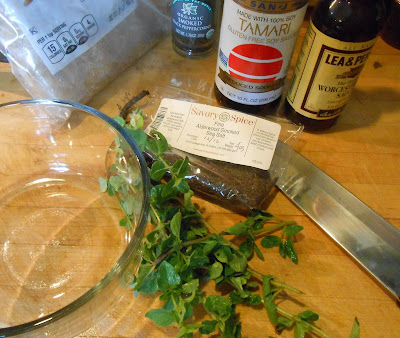It's been a while since I've blogged about my mead. I am newly back from judging at the Mazer Cup International competition (
Mazer Cup International website) and thinking about mead!
 |
| Some of the yummy mead I judged, and so pretty! |
My mead was created of two ingredients created locally by true craftspeople and I am so blessed to have the results of their labors.
For those of you who haven't read a lot of my blog - mead is a fermented honey beverage. Wine is a fermented grape juice beverage. Beer is a fermented grain beverage. Each are their own thing.
Simply described, long time readers know I can drone on and on about this topic. But in brief: Honey is diluted with water and yeast is added. Time passes. The yeast eats the sugar and excretes ethanol. Eventually, the yeast settles to the bottom. Then you "rack" or siphon the mead off the dead yeast "lees" into a clean bottle or "carboy" and let it begin to age. Eventually you might bottle the mead and it can age more. The whole process takes a couple of years to do right, in my opinion.
 |
| Mead in carboy |
Here you can see a carboy in the section of our studio that I have claimed for brewing. The thing on the top of the carboy is called an "airlock". It is filled with a liquid (often vodka or water) and makes a one-way valve. The yeast creates gasses during the fermentation process and the air lock lets these gasses escape without allowing the outside air in.
The air may contain dust, mold, wild yeast, and other things you wouldn't want contaminating your mead.
I keep my carboys on those wheeled plant stands. It makes it really easy to move them around. 5 gallons of honey/water mix are not something that you just sort of slide around. The heavy duty plant stands are the recommended. The light weight cheap ones from Harbor Freight don't last long - voice of experience speaking here!
 |
| Yeast settling to the bottom |
Here you can see the lees in the bottom of the carboy. This is the sleeping/stunned/dead yeast. Everybody I know that brews has their own ideas about when to rack off the lees. I'm not ready to yet. Everybody has their own reasons why, and all of them are valid and for good reason.
 |
| Getting just a bit clearer at the top! |
I like to see a bit more clearing. The yeast is still working, I can see a bit of foam on the top. But as you can see from the first picture, not very much.
Looking carefully, you can see a bit of color difference in the top inch or so, then the body of the carboy, then the settled yeast.
This has taken quite a while to get to this stage, not sure why but there you have it.
But, I'm not going to rush it in any way. I'll just let it take it's time. It will take the time it needs.
The mead is a blend of honey gathered by my friend Jester, who writes an amazing music blog (
Jester's music blog), is a terrific musician in his own right, a talented brewer, and a beekeeper. Last fall he gifted me with a gallon of honey from his hives. He just noted that when he opened his hives this spring, the bees were dead. Victims of something he wasn't sure, but suspected disease. Which makes this gallon on honey all the more special.
By the way, if you haven't been following the problems bees are having, I suggest you check out this TED talk: (
Dennis vanEnglelsdorp TED talk on bees).
The other ingredient is 2 gallons of fresh squeezed apple juice created by friends.
 |
| Boxes of apples reading for grinding |
 |
Apples ground in a dedicated sink
and garbage disposal grinder |
 |
| Ground apples being loaded into cloth reading for squeezing |
 |
| Bags of apples stacked and under pressure |
 |
| Juice!!! |
 |
| Pressing apple juice |
This was such a great day! Neighbors from this old section of a tiny town in Northern Colorado allowed my friends to harvest their apples.
 |
Yummy yummy juice and bottle of last year's cider
|
The apples were ground up using a dedicated sink and garbage disposal unit. The apple slush was piled into a bag, then a board was placed on top, then another bag, etc. Then a multi-ton jack was called into service to press the juice.
The cascade of juice was so abundant!
My friends made hard cider of most of the juice but I snagged 2 gallons for my mead.
Commercial mead is growing in popularity. I recommend that you ask for mead where you drink. Only with the observation of desire will change occur. The number of commercial meaderies has increased every year, but there is still so much room for growth.













Comments
Can't wait to taste the mead.
I imagine it will be drinkable in another year or so. I've only got 24 bottles so I'm not sampling until I think enough time has passed.
Maybe we can try it at Thanksgiving!
I didn't build the press, but I forwarded your note to the man who did.
If he has plans and is able, I'll see if I can post a link for them in a new blog.
I'm about ready to bottle this mead, so plans for the press would be a great addition to the blog!